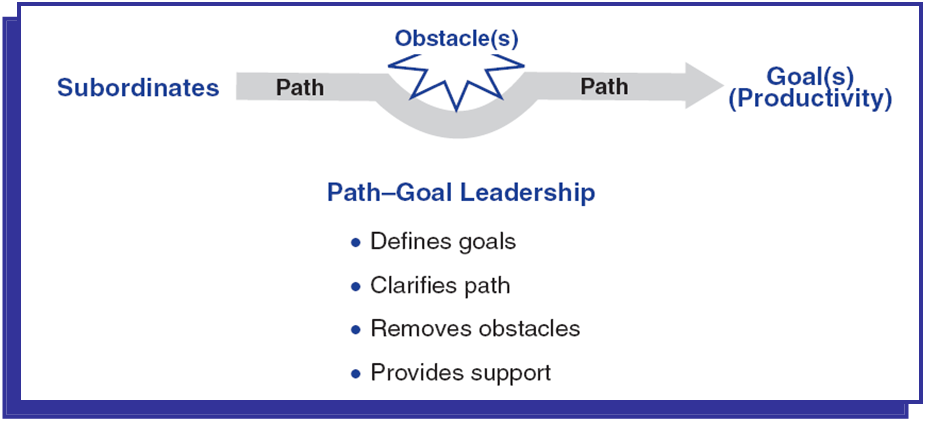Path-Goal Theory
 In its essence, path-goal theory represents a framework for analysing the manner in which leaders motivate employees to achieve organisational objectives. Specifically, “the path-goal leadership model is used to select the leadership style (directive, supportive, participative, or achievement oriented) appropriate to the situation (subordinate and environment) to maximise both, performance and job satisfaction” (Lussier and Achua, 2010, p.161)
In its essence, path-goal theory represents a framework for analysing the manner in which leaders motivate employees to achieve organisational objectives. Specifically, “the path-goal leadership model is used to select the leadership style (directive, supportive, participative, or achievement oriented) appropriate to the situation (subordinate and environment) to maximise both, performance and job satisfaction” (Lussier and Achua, 2010, p.161)
Path-goal model perceives the main purpose of leadership in increasing the level of employee performance thorough increasing the level of their motivation.
Under the path-goal model leadership behaviours are divided into the following four categories:
a) Directive leadership – leader is mainly engaged in clarifying expectations, deadlines and outcome standards. Leaders give guidance and directions to subordinates for performance
b) Supportive leadership – being friendly and approachable, supportive leaders treat each member of the workforce as equal, and care about their well-being to a great extent. Leader shows concern and cares about subordinates
c) Participative leadership – employee input is integrated in decision making process by the leader through initiating discussions and encouraging employees to share their opinions regarding various organisational processes. Leader listens to subordinates and considers their suggestions.
d) Achievement-Oriented leadership – increased level of performance is achieved by leaders from subordinates through assigning challenging tasks and setting high performance standards. Leader’s goals are high and expectations for subordinate’s performances are also high.
It is important to note that path-goal leadership model attracts a set of criticism that includes incorporating many aspects of leadership within a single model and a failure to represent the nature of relationship between leadership practice and employee motivation in a detailed manner.
References
Lussier, R.N. & Achua, C.F. (2010) “Leadership: Theory, Application, & Skill Development” 4th edition, Cengage Learning

